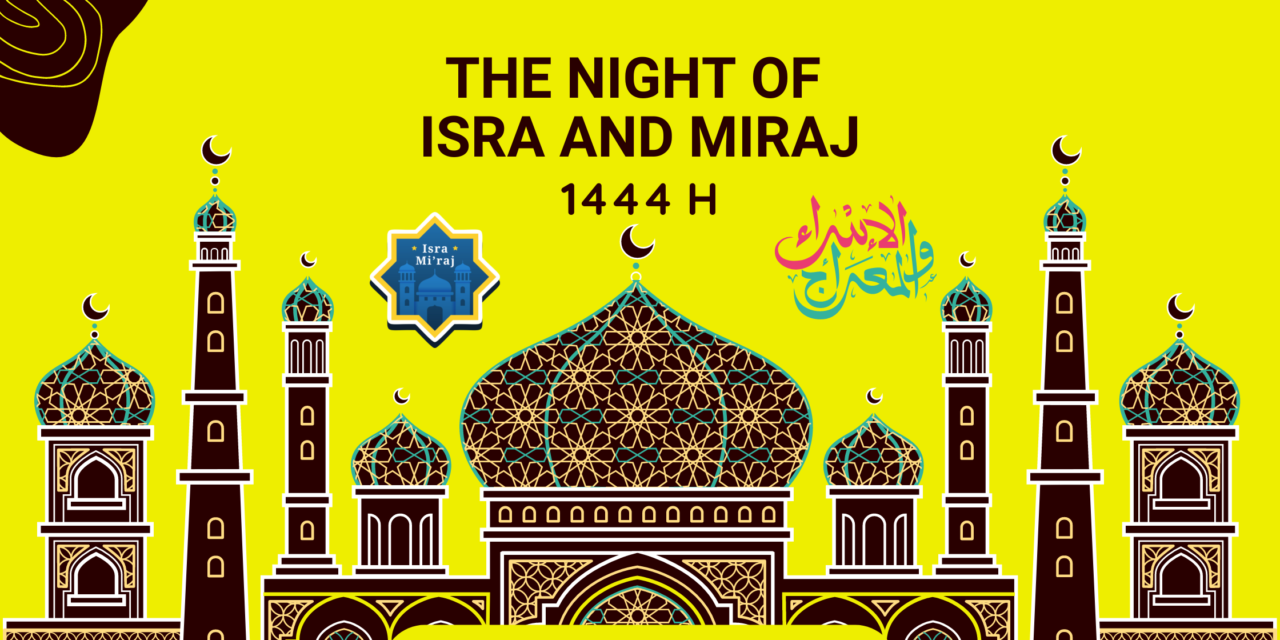Question 01: What are the Isra and Miraj?
The Isra and Miraj are two important events in the life of the Prophet Muhammad (peace be upon him) that are considered to be of great significance in Islam. The Isra refers to the night journey of the Prophet from the Kaaba in Mecca to the Al-Aqsa Mosque in Jerusalem, while the Miraj refers to his ascent through the seven heavens.
Question 02: When did the Isra and Miraj take place?
According to Islamic tradition, the Isra and Miraj took place in the year 621 CE, on the 27th Night of Rajab Month, a few years after the Prophet began preaching the message of Islam.
Question 03: What happened on the night of the Isra?
On this night, the Prophet was miraculously transported from Mecca to Jerusalem by a winged creature known as Al-Buraq. In Jerusalem, the Prophet is said to have led the other prophets in prayer and then began his ascent through the seven heavens.
Question 04: Who did the Prophet meet in the seven heavens?
In each of the seven heavens, the Prophet is said to have met with one of the great prophets of the past. In the first heaven, he met with Prophet Adam, and in the second heaven, he met with Prophet John and Jesus. In the third heaven, he met Prophet Joseph, in the fourth heaven, he met Prophet Enoch (Idris), in the fifth heaven, he met Prophet Aaron, and in the sixth heaven, he met Prophet Moses.
Question 05: Who did the Prophet meet in the seventh heaven?
In the seventh heaven, the Prophet is said to have met with Prophet Abraham, who is revered in Islamic tradition as the father of the monotheistic religions and as a model of devotion and obedience to God.
Question 06: What is Baitul Ma’mur?
Baitul Ma’mur is a mysterious and significant location in Islamic mysticism. It is often referred to as the “House of the Protected” or “The House of Allah”. In Islamic tradition, it is said to be located in the seventh heaven and is the place where 70,000 angels perform daily prayers in front of Allah.
Question 07: What happened when the Prophet reached the seventh heaven?
The Prophet received revelations and guidance from Allah, who gave him the command to lead the Muslims in prayer five times a day. The Prophet’s journey then continued beyond the seven heavens, and he reached a point known as Sidratul Muntaha, which is a massive tree that marks the end of the known universe. Here, the Prophet encountered an angelic being who was assigned to oversee the rest of creation, and he received further revelations and guidance from Allah.
Question 08: Why are the Isra and Miraj considered to be of great significance in Islam?
This event is considered to be of great significance in Islam, as it marks the beginning of the formal institution of prayer as one of the five pillars of Islam. The Isra and Miraj are considered to be two of the most important events in the life of the Prophet and are revered by Muslims as a source of inspiration and guidance. The night journey is a reminder of the Prophet’s steadfastness in the face of adversity and his unwavering devotion to God, and the ascent through the seven heavens and beyond is a symbol of the Prophet’s spiritual journey and his closeness to Allah.
Question 09: What should Muslims do in Isra and Miraj?
The Isra and Miraj are events of great spiritual significance for Muslims, and there are several things that Muslims can do to commemorate and celebrate these events. Some of the ways in which Muslims can observe the Isra and Miraj include:
1) Recitation of Quranic verses and Hadiths:
Muslims can recite Quranic verses and Hadiths related to the Isra and Miraj in order to gain a deeper understanding of these events and their significance.
2) Prayer and Reflection:
Muslims can spend time in prayer and reflection, focusing on the themes of the Isra and Miraj, such as the Prophet’s close relationship with God and the central role he played in Islamic history.
3) Community Celebrations:
Many Muslim communities hold special events and celebrations to commemorate the Isra and Miraj. These events can include speeches, prayers, and recitations of Quranic verses and Hadiths.
4) Charity and Good Deeds:
Muslims can use the occasion of the Isra and Miraj to perform good deeds and engage in acts of charity, as a way of following the Prophet’s example and seeking to live a life that is pleasing to God.
5) Pilgrimage to Jerusalem:
For those who are able to make the journey, visiting the Al-Aqsa Mosque in Jerusalem is considered to be a way of honoring the Prophet’s journey and connecting with the spiritual significance of the Isra and Miraj.
These are just a few of the ways in which Muslims can observe and celebrate the Isra and Miraj. The most important thing is to approach these events with a spirit of reverence and devotion, seeking to deepen one’s understanding and connection to God.
Note:
Overall, celebrating the Isra and Miraj is seen as a positive and meaningful tradition in Islam, and is widely practiced and celebrated by Muslims all over the world.
So, while celebrating the Isra and Miraj is a traditional and meaningful practice for many Muslims, it is not considered to be a requirement for all. Whether or not to celebrate these events is a personal choice, and Muslims are encouraged to approach these events in a way that feels meaningful and authentic to them.
Conclusion,
the Isra and Miraj are considered to be two of the most important events in the life of the Prophet Muhammad (peace be upon him) and are an integral part of the Islamic tradition. They serve as a source of inspiration and guidance for Muslims and are a reminder of the Prophet’s steadfastness, devotion, and closeness to Allah.






![The Night of Power [Lailatul Qadr]: The Most Sacred Night in Islam](https://hafizfurqanofficial.com/wp-content/uploads/2023/04/Copy-of-Syed-Alam-Blog-Banner-1-440x264.png)
